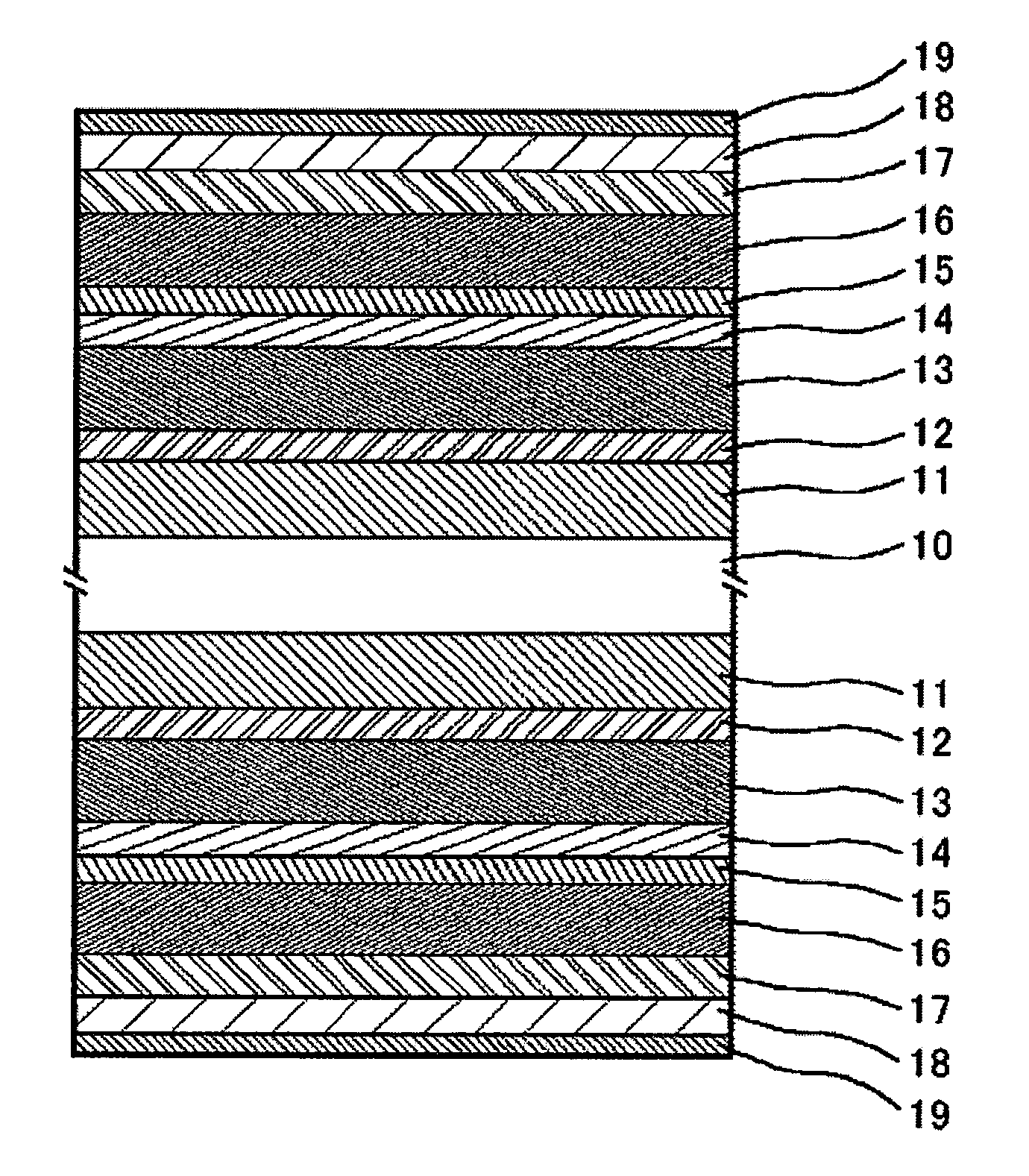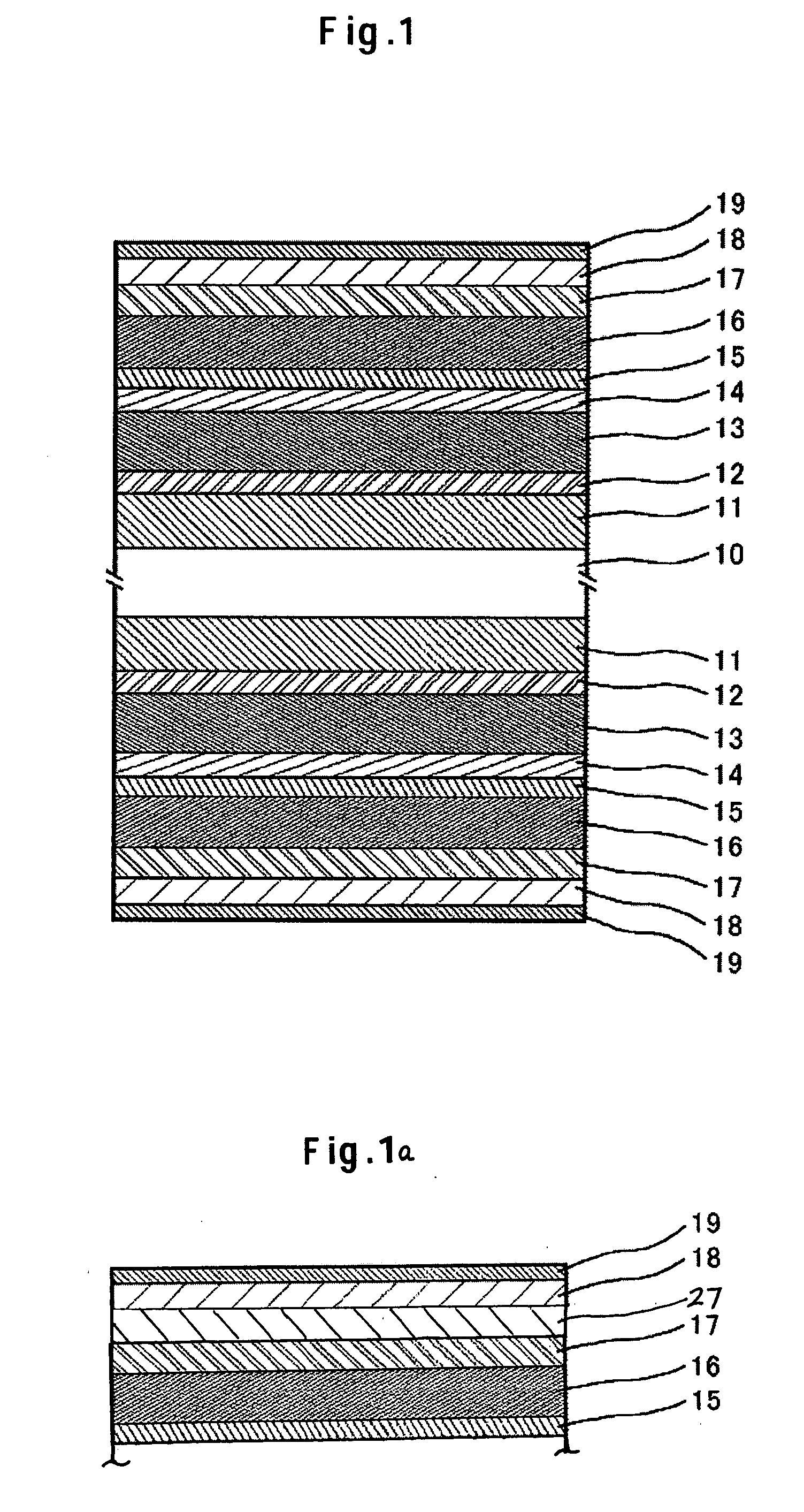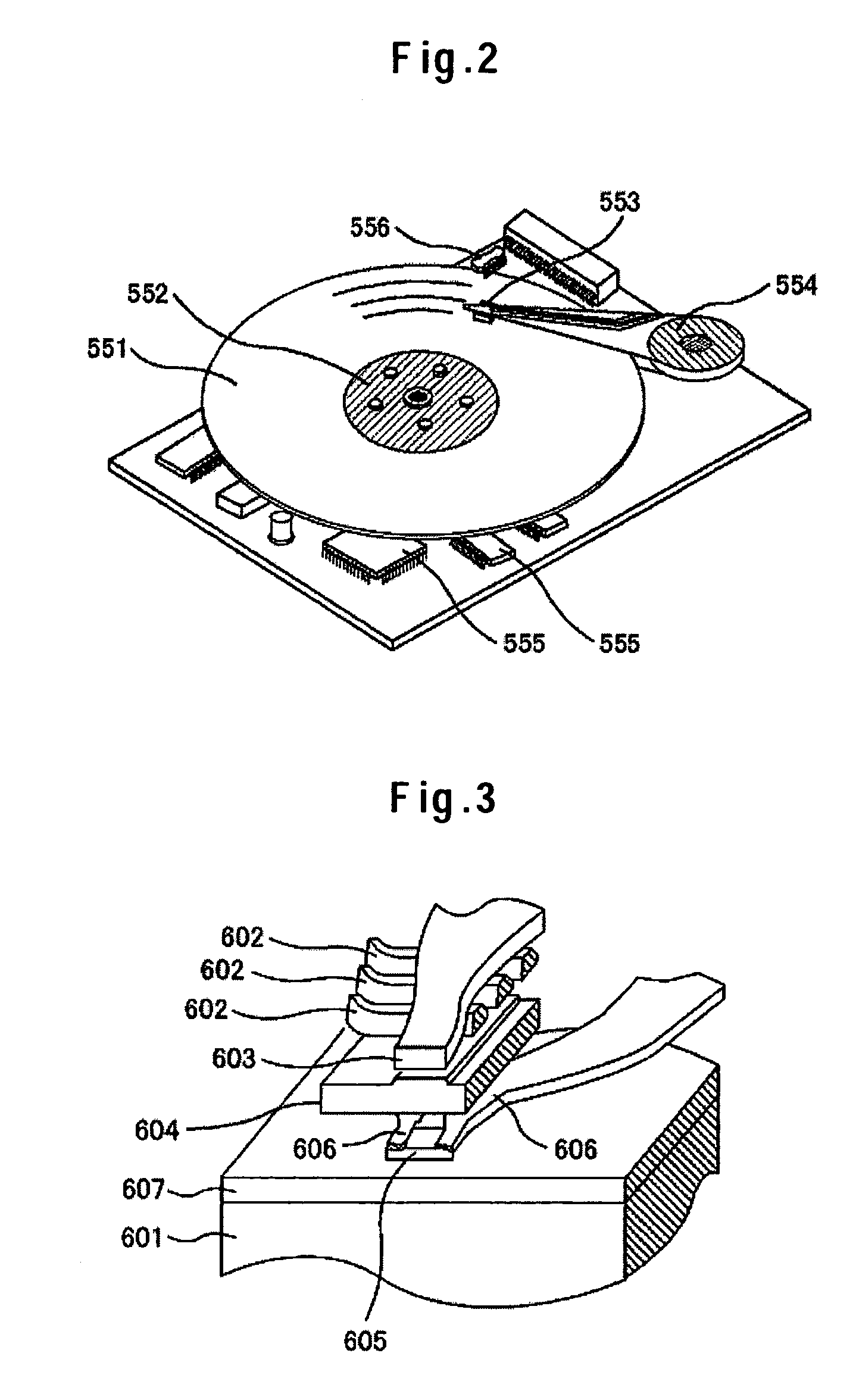Magnetic recording medium and magnetic memory device for high density recording
- Summary
- Abstract
- Description
- Claims
- Application Information
AI Technical Summary
Benefits of technology
Problems solved by technology
Method used
Image
Examples
example 1
[0033]FIG. 1 shows a cross sectional structural view of a magnetic recording medium according to Example 1 of the invention. After alkali cleaning an alumino silicate glass substrate 10 chemically strengthened at the surface and drying the same, a Co—SO at. % Ti alloy of 15 nm thickness as a first underlayer 11, and a W-30 at. % Co alloy layer of 3 nm thickness as a second underlayer 12 were formed at room temperature. After heating the substrate by a lamp heater to a temperature of about 240° C. to 300° C., a Cr-10 at. % Ti-3 at. % B alloy of 8 nm thickness was formed as a third underlayer 13. Further, a first magnetic layer 14 including a Co-14 at. % Cr-6 at. % Pt alloy of 3 nm thickness, a Ru intermediate layer 15 of 0.6 nm thickness, and a second magnetic layer 16 including a Co—Cr—Pt—B alloy were formed successively, a third magnetic layer 17 containing at least platinum and cobalt was formed and a film 18 of 3.2 nm thickness including carbon as a main ingredient was formed as ...
example 2
[0065] In a case of using a Co-18 at. % Cr-12 at. % Pt-6 at. % B alloy as the second magnetic layer, the total for the concentrations of Co and Pt is 76%. Using the composition as the composition for the second magnetic layer, magnetic recording media were formed while changing the composition and the film thickness of the third magnetic layer. Table 9 shows relations between the composition and the magnetic characteristic of the third magnetic layer.
[0066] The electromagnetic conversion characteristics were evaluated for the magnetic recording media having the magnetic characteristics described above by using the head 54 shown in Table 5. Table 10 shows the results.
[0067] From the comparison between Test Examples 441 and 442 it was found that the overwrite characteristic, the medium S / N and the bit error rate logBER as the logarithmic expression are improved in a case where the thickness of the second magnetic layer is increased. In a case of using a Co-18 at. % Cr-12 at. % Pt-6 ...
example 3
[0068] In a case of using a Co-24 at. % Cr-14. , at. % Pt-6 at. % B-2 at. % Ta alloy as the second magnetic layer, the total for the concentrations of Co and Pt is 68%. In a case of using a Co-12 at. % Cr-12 at. % Pt-10 at. % B alloy for the third magnetic layer, the total for the concentrations of Co and Pt occupied in the third magnetic layer is 78%. Magnetic recording media were formed while changing the thickness of the magnetic layers and setting the heater power to 2.4 kW (Table 11). A bias voltage at −200 V was applied upon forming the second magnetic layer and the third magnetic layer except for Test Example 505. In Test Example 505, a bias voltage at −200V was applied upon forming the second magnetic layer and a bias voltage was not applied upon forming the third magnetic film. Electromagnetic conversion characteristics were evaluated for the magnetic recording media using the head 55 shown in Table 5. Table 11 shows the results.
[0069] When the Test Example 502 and the Tes...
PUM
 Login to view more
Login to view more Abstract
Description
Claims
Application Information
 Login to view more
Login to view more - R&D Engineer
- R&D Manager
- IP Professional
- Industry Leading Data Capabilities
- Powerful AI technology
- Patent DNA Extraction
Browse by: Latest US Patents, China's latest patents, Technical Efficacy Thesaurus, Application Domain, Technology Topic.
© 2024 PatSnap. All rights reserved.Legal|Privacy policy|Modern Slavery Act Transparency Statement|Sitemap



